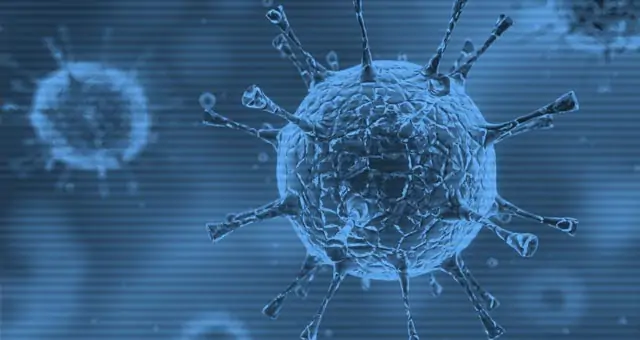What is RSV and Why has the CDC Issued a Health Advisory About It?
July 15, 2021

On June 10, 2021, the Centers for Disease Control and Prevention (CDC) issued an official health advisory regarding increased interseasonal respiratory syncytial virus (RSV) activity across part of the southern U.S. RSV is an RNA virus primarily spread via airborne respiratory droplets when a person coughs or sneezes, similar to coronavirus and influenza, as well as through direct contract with a contaminated surface. Per the CDC:
“RSV is the most common cause of bronchiolitis and pneumonia in children under one year of age in the United States. Infants, young children, and older adults with chronic medical conditions are at risk of severe disease from RSV infection. Each year in the United States, RSV leads to on average approximately 58,000 hospitalizations with 100-500 deaths among children younger than 5 years old and 177,000 hospitalizations with 14,000 deaths among adults aged 65 years or older.”
Where is RSV spreading?
Although RSV is nothing new, what is new this year is that RSV infections, which occur primarily during the fall and winter, are being seen in the summer. As the CDC reports, RSV activity decreased rapidly in April 2020 likely due to the adoption of public health measures to reduce the spread of COVID-19 and, as compared with previous years, remained relatively low from May 2020 to March 2021. Since March, an increase has been observed in a number of southern states including Alabama, Arkansas, Florida, Georgia, Kentucky, Louisiana, Mississippi, New Mexico, North Carolina, Oklahoma, South Carolina, Tennessee, and Texas.
Why is RSV spreading?
Medical experts speculate that because RSV was suppressed during winter, it’s normal circulation time, it’s “making up for lost time now.” Further, because RSV was not circulated as much during the winter months of 2020-2021, the CDC says, “older infants and toddlers might now be at increased risk of severe RSV-associated illness since they have likely not had typical levels of exposure to RSV during the past 15 months.”
What are RSV symptoms?
As described by the CDC, people infected with RSV usually show symptoms within 4 to 6 days after getting infected. Symptoms usually include runny nose, decrease in appetite, coughing, sneezing, fever, and wheezing. Further, “these symptoms usually appear in stages and not all at once. In very young infants with RSV, the only symptoms may be irritability, decreased activity, and breathing difficulties.” Notably, “almost all children will have had an RSV infection by their second birthday.”
Further, per the Mayo Clinic, “in adults and older, healthy children, RSV symptoms are mild and typically mimic the common cold. Self-care measures are usually all that’s needed to relieve any discomfort.” But the virus “can cause severe infection in some people, including babies 12 months and younger (infants), especially premature infants, older adults, people with heart and lung disease, or anyone with a weak immune system (immunocompromised).”
How can the spread of RSV be prevented?
Preventing the spread of RSV is not unlike preventing the spread of COVID-19, another airborne disease, something we’re all well-versed in now. That COVID-19 measures work is reflected in the timeframe when RSV rapidly decreased. Individually, people infected with RSV should prevent spreading airborne respiratory droplets from coughs and sneezes. Cover your mouth when coughing or sneezing (but not with your hands). The CDC has recommended “a tissue or your upper shirt sleeve” but many of us also have a drawer full of masks now to help protect others. Also, frequent surface disinfection and avoiding close contact with others are critical measures.
To help prevent the spread of RSV, an airborne disease, on a larger scale, ultraviolet germicidal irradiation (UVGI or UV) holds promise. While Aerapy UV has not been tested against the RSV pathogen specifically, our UV technology has been tested against a virus in the Paramyxoviridae family which includes pneumovirus and paramyxovirus. RSV is a pneumovirus and canine distemper virus (CDV) is a paramyxovirus. Aerapy UV technology has been independently tested against CDV and was found to kill at least 98.89% of the virus. The test results were part of a University of Arizona study published in the American Journal of Veterinary Research (AJVR).
Contact us to request more information on our test results and request a free UV consultation.
HOW PROTECTED ARE YOU?
Aerapy's commercial-grade UV lights protect your clients, staff, and your business with proven UV disinfection technology. Contact us for more information.
Please send me more information.

What is RSV and Why has the CDC Issued a Health Advisory About It?
July 15, 2021

On June 10, 2021, the Centers for Disease Control and Prevention (CDC) issued an official health advisory regarding increased interseasonal respiratory syncytial virus (RSV) activity across part of the southern U.S. RSV is an RNA virus primarily spread via airborne respiratory droplets when a person coughs or sneezes, similar to coronavirus and influenza, as well as through direct contract with a contaminated surface. Per the CDC:
“RSV is the most common cause of bronchiolitis and pneumonia in children under one year of age in the United States. Infants, young children, and older adults with chronic medical conditions are at risk of severe disease from RSV infection. Each year in the United States, RSV leads to on average approximately 58,000 hospitalizations with 100-500 deaths among children younger than 5 years old and 177,000 hospitalizations with 14,000 deaths among adults aged 65 years or older.”
Where is RSV spreading?
Although RSV is nothing new, what is new this year is that RSV infections, which occur primarily during the fall and winter, are being seen in the summer. As the CDC reports, RSV activity decreased rapidly in April 2020 likely due to the adoption of public health measures to reduce the spread of COVID-19 and, as compared with previous years, remained relatively low from May 2020 to March 2021. Since March, an increase has been observed in a number of southern states including Alabama, Arkansas, Florida, Georgia, Kentucky, Louisiana, Mississippi, New Mexico, North Carolina, Oklahoma, South Carolina, Tennessee, and Texas.
Why is RSV spreading?
Medical experts speculate that because RSV was suppressed during winter, it’s normal circulation time, it’s “making up for lost time now.” Further, because RSV was not circulated as much during the winter months of 2020-2021, the CDC says, “older infants and toddlers might now be at increased risk of severe RSV-associated illness since they have likely not had typical levels of exposure to RSV during the past 15 months.”
What are RSV symptoms?
As described by the CDC, people infected with RSV usually show symptoms within 4 to 6 days after getting infected. Symptoms usually include runny nose, decrease in appetite, coughing, sneezing, fever, and wheezing. Further, “these symptoms usually appear in stages and not all at once. In very young infants with RSV, the only symptoms may be irritability, decreased activity, and breathing difficulties.” Notably, “almost all children will have had an RSV infection by their second birthday.”
Further, per the Mayo Clinic, “in adults and older, healthy children, RSV symptoms are mild and typically mimic the common cold. Self-care measures are usually all that’s needed to relieve any discomfort.” But the virus “can cause severe infection in some people, including babies 12 months and younger (infants), especially premature infants, older adults, people with heart and lung disease, or anyone with a weak immune system (immunocompromised).”
How can the spread of RSV be prevented?
Preventing the spread of RSV is not unlike preventing the spread of COVID-19, another airborne disease, something we’re all well-versed in now. That COVID-19 measures work is reflected in the timeframe when RSV rapidly decreased. Individually, people infected with RSV should prevent spreading airborne respiratory droplets from coughs and sneezes. Cover your mouth when coughing or sneezing (but not with your hands). The CDC has recommended “a tissue or your upper shirt sleeve” but many of us also have a drawer full of masks now to help protect others. Also, frequent surface disinfection and avoiding close contact with others are critical measures.
To help prevent the spread of RSV, an airborne disease, on a larger scale, ultraviolet germicidal irradiation (UVGI or UV) holds promise. While Aerapy UV has not been tested against the RSV pathogen specifically, our UV technology has been tested against a virus in the Paramyxoviridae family which includes pneumovirus and paramyxovirus. RSV is a pneumovirus and canine distemper virus (CDV) is a paramyxovirus. Aerapy UV technology has been independently tested against CDV and was found to kill at least 98.89% of the virus. The test results were part of a University of Arizona study published in the American Journal of Veterinary Research (AJVR).
Contact us to request more information on our test results and request a free UV consultation.
HOW PROTECTED ARE YOU?
Aerapy's commercial-grade UV lights protect your clients, staff, and your business with proven UV disinfection technology. Contact us for more information.
Please send me more information.

